Storm Damage Roof Repair: Essential Tips for Effective Solutions
Addressing storm damage promptly is crucial to minimize further issues and protect the integrity of your roof. Neglecting roof repairs can lead to severe consequences and costly repairs in the long run. This article aims to provide comprehensive guidance on storm damage roof repair, offering essential tips and insights.
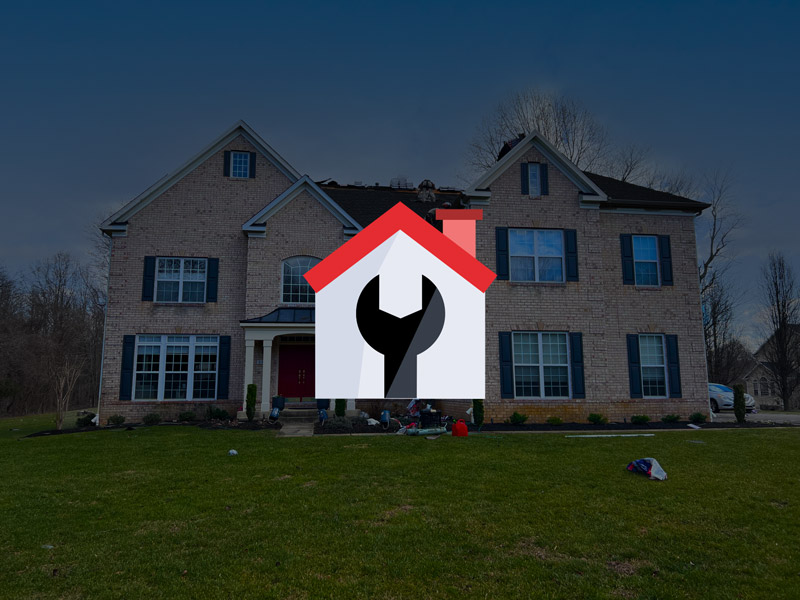
The Importance of Timely Action
When a storm damages your roof, immediate action is essential to prevent additional harm. Failure to address storm damage promptly can result in water infiltration, structural damage, and compromised safety within your home. Ignoring minor issues can lead to more significant problems in the future.
Potential Risks and Consequences
Neglecting storm damage roof repairs can have several consequences:
- Water leaks and moisture intrusion: Unrepaired damage allows water to penetrate the roof, leading to interior water leaks, mold growth, and rotting of underlying structures.
- Weakened structural integrity: Delayed repairs can cause structural damage to the roof, compromising its stability and increasing the risk of collapse.
- Increased energy costs: Damaged roofs often result in reduced insulation, leading to energy loss and higher heating or cooling expenses.
- Decreased property value: An unrepaired storm-damaged roof can significantly reduce the value of your property and make it challenging to sell in the future.
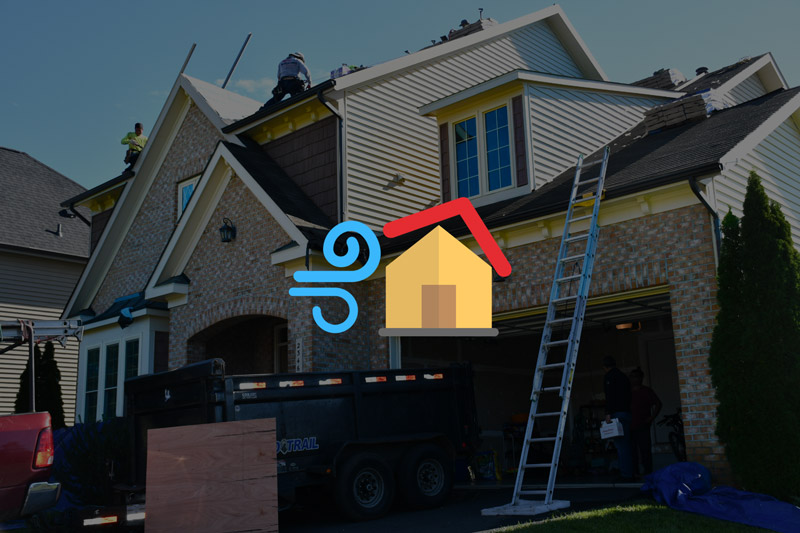
Assessing the Damage
To assess storm damage to your roof, follow these step-by-step instructions:
- Begin by ensuring your safety. Use proper safety equipment like a harness and sturdy footwear.
- Carefully inspect the exterior of your roof from the ground, looking for visible signs of damage such as missing or broken shingles, dented flashing, or displaced gutters.
- If it is safe to do so, use a ladder to access the roof. Walk carefully, avoiding fragile areas, and examine the surface for any additional visible damage.
- Pay close attention to the condition of the shingles. Look for cracks, tears, curling, or granule loss, as these are indications of damage.
- Inspect the gutters, downspouts, and drainage system for debris accumulation or signs of blockage that could lead to water backup and potential damage.
- Examine the flashing around chimneys, vents, and skylights. Look for any signs of rust, corrosion, or dislodgment.
- Check the condition of roof vents and ensure they are intact and functioning properly.
Key Areas to Focus on During Assessment
- Shingles: Check for missing, cracked, or damaged shingles, as well as signs of aging or deterioration.
- Gutters: Examine the gutters for dents, sagging, or detachment, which could indicate damage caused by falling debris or excessive rainfall.
- Flashing: Inspect the flashing around chimneys, vents, and other roof protrusions for signs of damage or displacement.
- Vents: Ensure that roof vents are intact and free from damage that could compromise proper ventilation.
- Documentation: Take clear photos and detailed notes of the damage observed, including the date and time of inspection, for insurance purposes.
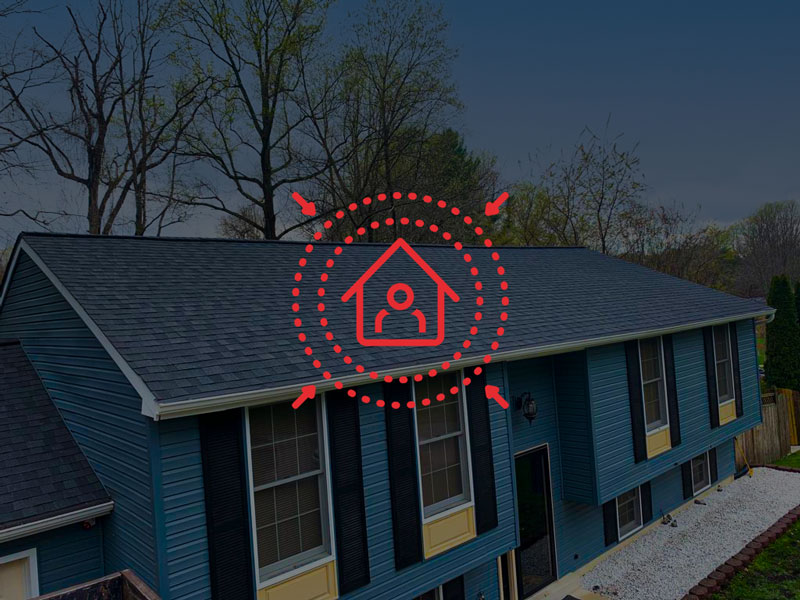
Preventive Measures and Maintenance
To safeguard your roof from future storm damage, taking preventive measures is crucial. By being proactive, you can minimize potential risks and costly repairs. Implementing the following preventive measures will help ensure the longevity of your roof.
Regular Roof Maintenance Practices
- Gutter Cleaning: Regularly clean your gutters to prevent clogs and ensure proper water drainage away from the roof. This will help prevent water backup and potential damage.
- Tree Limb Removal: Trim tree limbs near your roof to minimize the risk of branches falling during storms. This proactive step reduces the chances of damage caused by falling debris.
- Inspections: Schedule routine inspections by a professional roofing contractor. These inspections will help identify underlying issues or potential vulnerabilities before they become major problems.
Adequate Homeowner’s Insurance Coverage
Maintaining adequate homeowner’s insurance coverage is crucial, especially when it comes to storm-related incidents. Ensure your policy includes coverage for storm damage repairs and restoration. This will provide financial protection in case your roof sustains significant damage during severe weather events.
Tips for Protecting the Roof During Severe Weather
In addition to preventive measures and insurance coverage, there are additional steps you can take to protect your roof during severe weather conditions:
- Secure Loose Objects: Before a storm hits, secure loose objects such as patio furniture or debris that could become projectiles during high winds. This simple action can prevent potential damage to your roof.
- Enhance Roof Resistance: Consider installing impact-resistant shingles or using storm clips to enhance your roof’s resistance to wind damage. These measures provide added protection during severe weather events.
- Reinforce the Roof Structure: If you live in an area prone to severe storms, consider reinforcing your roof structure. Consulting a professional roofing contractor will help you determine the most effective reinforcement methods for your specific needs.
- Lightning Protection: Installing lightning rods can mitigate the risk of lightning strikes and protect your roof from potential damage. Consult with a professional to ensure proper installation and increased safety.
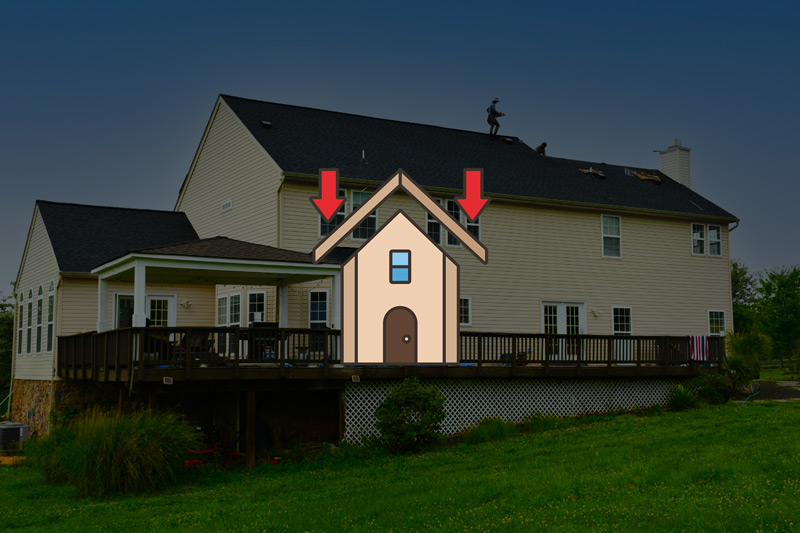
Permanent Repairs and Restoration
Types of Storm Damage and Necessary Steps
Different types of storm damage require specific steps for permanent repairs. Understanding the nature of the damage is crucial to effectively address the issue. Here are some common types of storm damage and the necessary steps to repair them:
- Wind Damage: If your roof has suffered wind damage, start by inspecting for loose or missing shingles. Secure any loose shingles using roofing cement and nails. Replace missing shingles with new ones, ensuring proper alignment and sealing.
- Hail Damage: Hail damage may result in dented or cracked shingles. Inspect the roof for signs of impact and replace any damaged shingles. Additionally, check for signs of granule loss, which could indicate underlying damage. Consider consulting a professional roofer to assess the extent of the damage.
- Water Damage: Water damage often occurs due to roof leaks caused by compromised shingles or flashing. Identify the source of the leak and repair or replace the damaged section. Ensure proper sealing and waterproofing to prevent future leaks.
Importance of Using High-Quality Roofing Materials
When repairing storm-damaged roofs, using high-quality roofing materials is essential. Opting for durable and reliable materials ensures longevity and protects your investment. Here are a few reasons why quality materials matter:
- Enhanced Durability: High-quality materials offer superior resistance against future storms and weather conditions, reducing the risk of recurring damage.
- Longevity: Investing in top-notch roofing materials extends the lifespan of your repaired roof, providing long-term protection for your home.
- Aesthetics: Quality materials contribute to an attractive and well-maintained roof, enhancing the overall appearance of your home.
Selecting Appropriate Replacement Materials
Selecting the right replacement materials is crucial for restoring your roof’s functionality and durability. Consider the following factors when choosing replacement materials:
- Shingles: Opt for shingles that are specifically designed to withstand your local weather conditions. Choose materials with high wind resistance and impact ratings.
- Underlayment: Ensure the underlayment provides an additional layer of protection against moisture. Consider synthetic underlayment, which offers enhanced durability and water resistance.
- Flashing: Use high-quality flashing materials to maintain a watertight seal around roof penetrations, such as chimneys and vents. Properly installed flashing prevents water intrusion and potential leaks.
Restoring Functionality, Appearance, and Weather Resistance
Restoring your roof after storm damage involves more than just repairs. It also entails bringing back its functionality, appearance, and weather resistance. Follow these steps for a comprehensive restoration:
- Structural Assessment: Inspect the roof’s structure for any hidden damage that may compromise its integrity. Address any issues to ensure a solid foundation for the restoration process.
- Repair and Replacement: Perform the necessary repairs and replacements as identified during the damage assessment. Use high-quality materials and adhere to recommended installation practices.
- Sealing and Waterproofing: Apply appropriate sealants and waterproofing materials to ensure the roof is properly protected against water infiltration.
- Final Inspection: Conduct a final inspection to ensure the restored roof meets the required standards for functionality, appearance, and weather resistance.
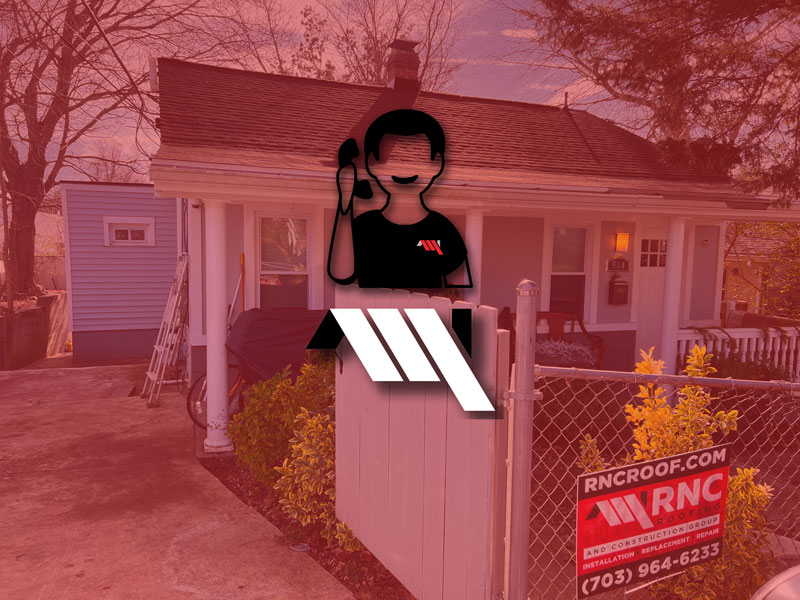
Hiring a Professional Roofing Contractor
Benefits of Hiring a Professional:
Professional roofers have extensive knowledge of storm damage and the specific repairs required.
They possess the necessary tools, equipment, and safety gear to handle the job safely.
Contractors are well-versed in local building codes and regulations, ensuring compliance.
They have access to high-quality materials and can provide warranty options for their workmanship.
Criteria for Selecting a Reliable Contractor:
Experience and Expertise:
Look for contractors with a proven track record in storm damage roof repairs.
Consider their years of experience, specialized training, and certifications.
Check for their portfolio or examples of previous storm damage repairs.
Licensing and Insurance:
Ensure that the contractor holds the required licenses and permits for your area.
Verify their insurance coverage, including liability insurance and workers’ compensation.
Reputation and References:
Research online reviews and testimonials from previous clients.
Request references from the contractor and follow up with those references.
Essential Questions to Ask Potential Contractors:
- How long have you been in the roofing business, specifically handling storm damage repairs?
- Can you provide references or examples of storm damage roof repairs you have completed?
- Do you have the necessary licenses and insurance coverage?
- What is your approach to safety during the repair process?
- Are you familiar with local building codes and regulations?
Tips for Evaluating Contractor Estimates and Contracts:
- Obtain detailed written estimates from multiple contractors for comparison.
- Ensure that the estimates include the scope of work, materials to be used, and labor costs.
- Verify if the estimate includes any potential additional expenses or unforeseen repairs.
- Carefully review the contract, ensuring it covers timelines, payment terms, and warranty information.
- Seek clarification on any ambiguous terms or conditions before signing the contract.
View More Articles
Please Share!











